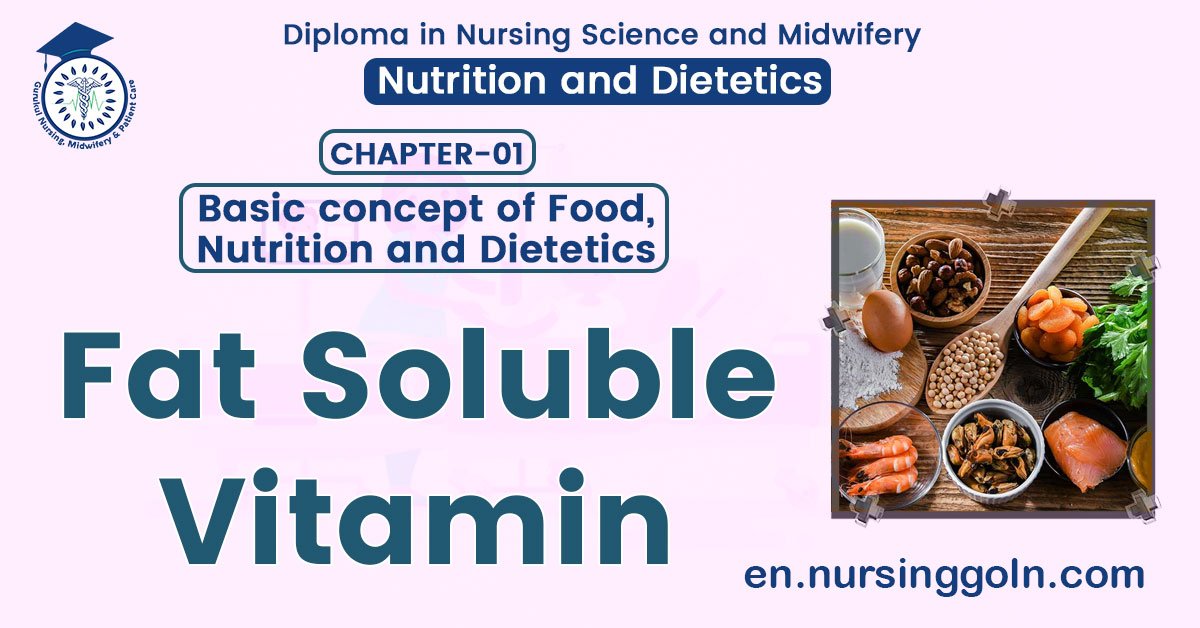Fat Soluble Vitamin – This book covers the entire syllabus of “Nutrition and Dietetics” prescribed by BNMC-for all Diploma in Nursing Science and Midwifery students. We tried to accommodate latest information and topics. This book is examination friendly setup according to the teachers’ lectures and examination’s questions. At the end of the book previous university questions are given. We hope in touch with the book students’ knowledge will be upgraded and flourished. The unique way of presentation may make your reading of the book a pleasurable experience.
Fat Soluble Vitamin
Fat-soluble vitamins are stored in the fatty tissues of the body and the liver. Fat-soluble vitamins are easier to store than water-soluble ones and can stay in the body as reserves for days, some of them for months.

Fat-soluble vitamins are absorbed through the intestinal tract with the help of fats (lipids).
Vitamins A, D, E, and K are fat-soluble.

Vitamins are organic molecules (or a set of closely related molecules called vitamers) that are essential to an organism in small quantities for proper metabolic function. Essential nutrients cannot be synthesized in the organism in sufficient quantities for survival, and therefore must be obtained through the diet.

For example, vitamin C can be synthesized by some species but not by others; it is not considered a vitamin in the first instance but is in the second. Most vitamins are not single molecules, but groups of related molecules called vitamers. For example, there are eight vitamers of vitamin E: four tocopherols and four tocotrienols.
The term vitamin does not include the three other groups of essential nutrients: minerals, essential fatty acids, and essential amino acids.
Read more:
